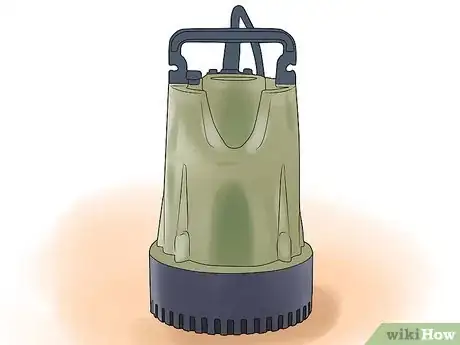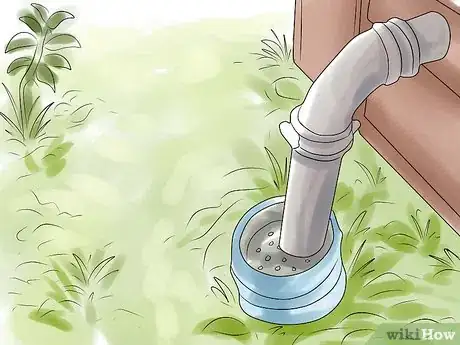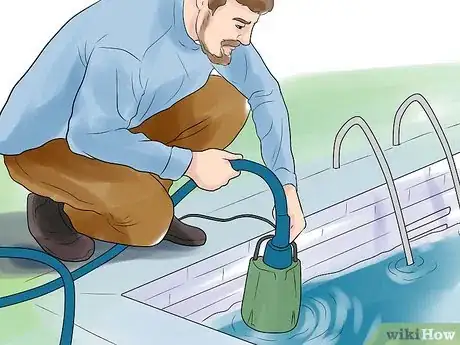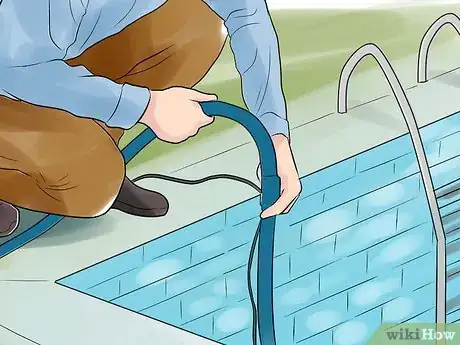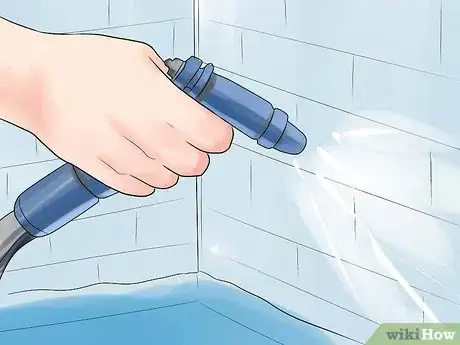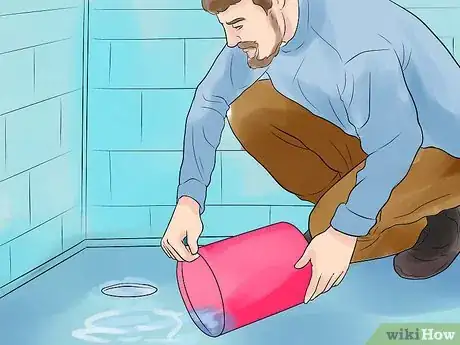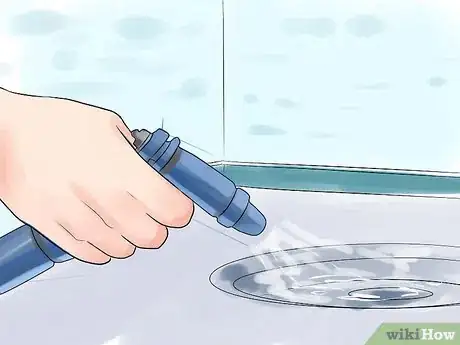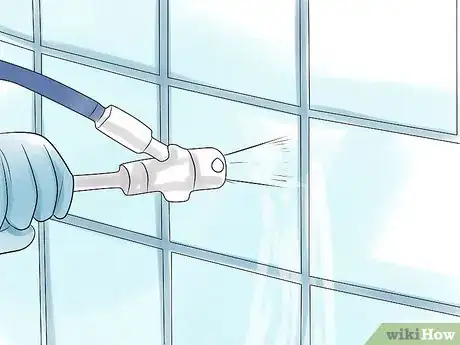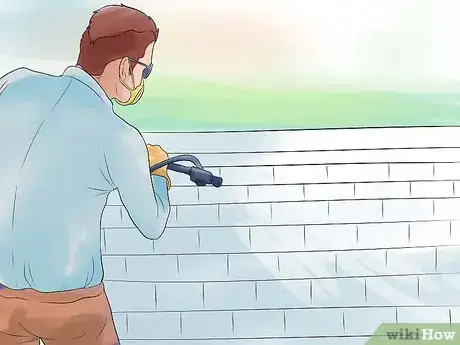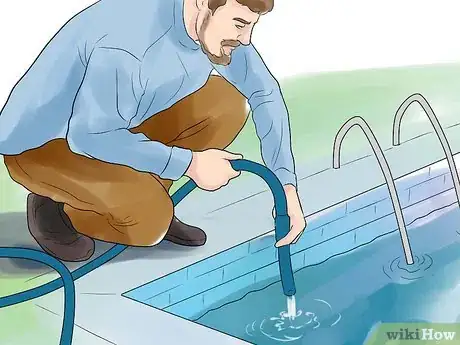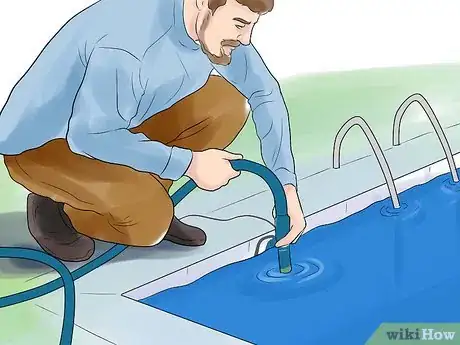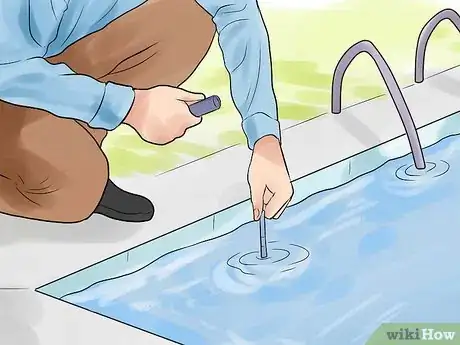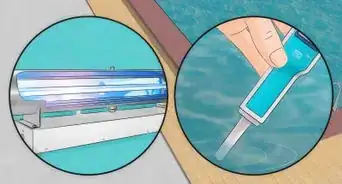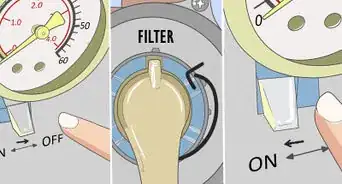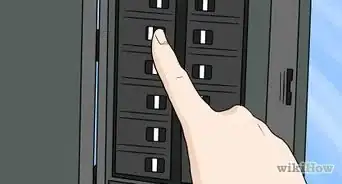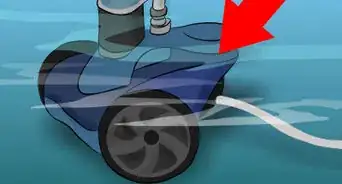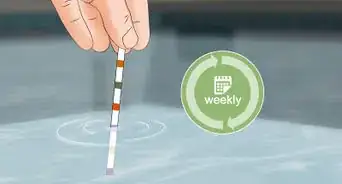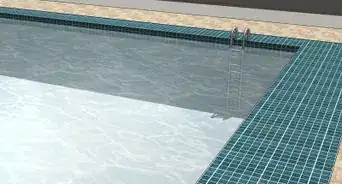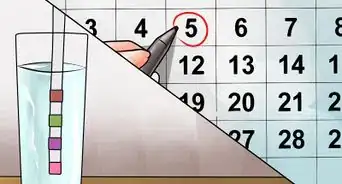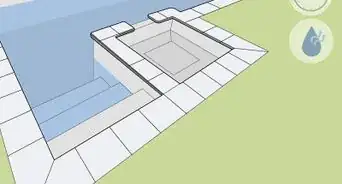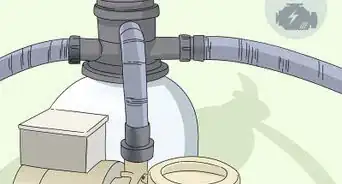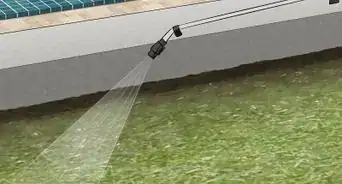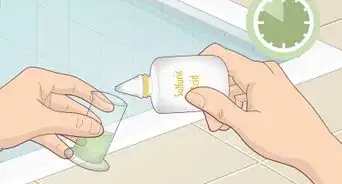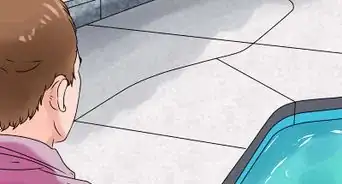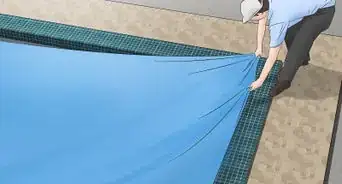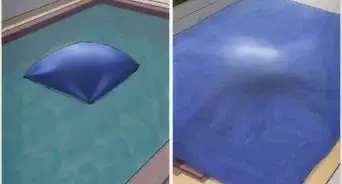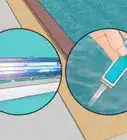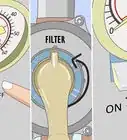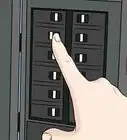This article was co-authored by Matt Daly. Matt Daly is a Landscape Designer and the Founder of Water & Earth Landscape Design, which is based in both Richmond, Virginia, and San Jose, California. With nearly 10 years of experience, he specializes in designing outdoor living spaces, including patios, pools, and fireplaces. Matt also runs a blog where he educates homeowners about landscaping topics: https://www.liveinyourbackyard.com/. He earned his Landscape Design & Horticulture Certification from The University of Richmond, where he also studied Sustainable Landscape Practices.
wikiHow marks an article as reader-approved once it receives enough positive feedback. In this case, several readers have written to tell us that this article was helpful to them, earning it our reader-approved status.
This article has been viewed 679,023 times.
Swimming pool water can get bad over the years — so bad that chemicals lose their effectiveness. With this information and a free weekend, you (and a friend) can drain and refill your pool without spending much more than $200 (not including necessary chemicals for new water).
Steps
Draining
-
1Go to a home improvement store and rent a submersible sump pump. Sump pumps can be rented for about $36/24 hours. Do this early in the day so your pool is empty before dark.
- Your rental should include rubber fire hoses in 50 feet (15.2 m) lengths. Two should be enough for most homeowner, but check to make sure the pool is not more than 100 feet (30.5 m) from your clean out/sewer access point.
-
2Set up the sump pump and discharge hoses, connecting the hoses to a clean out. This step is very important. Most municipalities won't let you drain your water directly into the street or a neighbor's yard, for example. That leaves you two options of where to drain the water:
- Directly into the clean out. This is usually a 3 to 4 inch (7.6 to 10.2 cm) plastic pipe on your property, usually outside a bathroom or the kitchen, with a screw cap on it which leads directly into the sewer. The city will reuse this water. On older homes, one clean out usually exists and is elevated on a wall. On newer homes, two clean outs usually exist, and they are ground-level — sometimes obscured by landscaping.
- Using a clean connected to a wall is risky and could cause water damage to the house. If your clean out is connected directly to your house. Consult a pool specialist or general contractor before proceeding.
- Irrigate the lawn, plants, or other shrubbery. This is not recommended if you are draining the entire pool, nor is it a great idea on certain lawns or plants that don't react well to excessive salt or chlorine. Certain grasses and Oleander species can take pool water, but citrus, hibiscus, or other salt-sensitive plants should not be irrigated in this fashion.
Advertisement - Directly into the clean out. This is usually a 3 to 4 inch (7.6 to 10.2 cm) plastic pipe on your property, usually outside a bathroom or the kitchen, with a screw cap on it which leads directly into the sewer. The city will reuse this water. On older homes, one clean out usually exists and is elevated on a wall. On newer homes, two clean outs usually exist, and they are ground-level — sometimes obscured by landscaping.
-
3Lower the pump into the pool and plug it in. Make sure the hose is properly attached and make sure the other end of the hose is stuck into the clean out before plugging in the pump. Some hoses will go down about 3 feet (0.9 m) into the clean out before hitting something; make sure to lodge it in properly.
-
4Watch your water disappear, monitoring the discharge carefully. The time it takes to drain your pool water will depend on the municipality laws, the pump speed, and the total size of the pool.
- Although it may sound strange, check your municipality's laws concerning the discharge rate. In some municipalities, the discharge rate is capped quite low — Phoenix, for example, sets theirs at 12 gallons (45.4 L) per minute (or 720 gal/hr). This ensures safe disposal of the water into the sewer.
- Most good pumps will far exceed the municipality's maximum discharge rate. They'll function safely at 50 gallons/minute, and top out at about 70 gallons/minute.
- Your pool size will also determine how long it takes. If you're pumping at 30 gallons/minute, or 1,800 gallons/hour, and you have a 25,000 gallon (94,635.3 L) pool, it will take roughly 14 hours to drain the pool.
-
5Every foot or so of water level decrease, spray the perimeter of the pool's previous water line with a hose. Do this especially if your water is dirty, as this will save you time in the end. Try some brushing while you are at it.
-
6Wait as the pump removes almost all of the water, draining the last bit manually. How much water the pump is able to remove will depending on your pool's contours at the deep end. Drain the last foot or so manually with two buckets. This is where a helper comes in handy.
Cleaning
-
1Blast debris out of the pop-ups with your hose. If you have an in-floor cleaning system, this is a great option for you to use. Alternately, you can contact the manufacturer of the pool for specific servicing/repair tips.
-
2Clean away any calcium or scale rings. Now is also a good time to clean away calcium or scale rings (if any exist). Calcium, Lime, and Rust remover, also known as CLR, usually works pretty well. Work at the tougher buildups with a putty knife, being careful not to damage the lining of the pool. Lesser buildups can usually be dispatched with rubber gloves, a scrubbing pad, and the aforementioned CLR.
- To keep the rings from reappearing, you can buy some "stain and scale inhibitor." Check the manufacturer's instructions for applications, as well as for repetitions. Some inhibitors need to be reapplied every month to be effective.
-
3Perform an acid wash on your pool (optional). A good acid wash will clean the walls of your pool, keep the water looking bright and transparent, and make the whole shebang an altogether more pleasant experience. If your pool is already fairly clean or you don't have time, you may skip this step.
Refilling
-
1Estimate the amount of time it will take to fill the pool with your current pumps. You don't want to go to sleep and wake up with a lake in your backyard. Do a little bit of homework to avoid needing to damage-control in the end.
-
2Fill up your pool. Connect one or more garden hoses to available spigots and drop them into the side of the pool. Turn them on. If your pool was newly plastered for example, you probably want to tie on some socks to the spout of the hose and secure with a couple rubber bands. That way, the force of the water doesn't mess with the plaster.
- Water should not be expensive. If you need to, call your city and inquire about how much they charge.
-
3Wait for the water to settle a few hours before adding any chemicals or additives. You're almost there. All you need to do now is test the alkalinity of the water, pH, and calcium hardness. After you've performed these tests, adjust the alkalinity, pH, and hardness of the water appropriately before adding chlorine, CYA (Cyanuric Acid), or salt.
Community Q&A
-
QuestionDo I need to add chemicals to a fresh pool?
 Community AnswerYes, you must add chemicals to keep the water clean.
Community AnswerYes, you must add chemicals to keep the water clean. -
QuestionHow often should I drain my in-ground pool?
 Community AnswerI drain and refill my indoor pool every other year. I also use it as a opportunity to patch up the tile grout and make other repairs.
Community AnswerI drain and refill my indoor pool every other year. I also use it as a opportunity to patch up the tile grout and make other repairs. -
QuestionDo I need to drain my 20,000-gallon pool all the way to have it measured for a new liner?
 Community AnswerTry to measure it with a yard stick by sticking it down against the inside of the pool (as shown in the picture.) The length could be measured above the pool, along the walkway beside the pool edge. Width is the same if measured at the backside of the pool along the edge.
Community AnswerTry to measure it with a yard stick by sticking it down against the inside of the pool (as shown in the picture.) The length could be measured above the pool, along the walkway beside the pool edge. Width is the same if measured at the backside of the pool along the edge.
Warnings
- Don't forget to switch off circuit breakers to the pump and other equipments.⧼thumbs_response⧽
- Not a good idea to drain your pool if can cause damage to your pool and cause "pop-off" that will cost more. Call an underwater pool repair company if you need to do repairs to your pool.⧼thumbs_response⧽
- Be careful with electricity around water. Especially when using a metal pole.⧼thumbs_response⧽
Things You'll Need
- Submersible sump pump with hoses to reach sewer line.
- Garden hose
- Patience
About This Article
To drain and refill your swimming pool, start by renting a submersible sump pump from a home improvement store, if you don't already have one. Then, you should connect the clean out pipe from the sump pump to the sewer, if your municipality allows that amount of drainage, or direct the water to irrigate your plants. After the pool is drained with the sump pump, clean the pool with a hose and scrub brush. Finally, refill the pool using 1 or 2 hoses and wait for the water to settle before adding chemicals. To learn how to clean your pool using an acid wash, read on!
